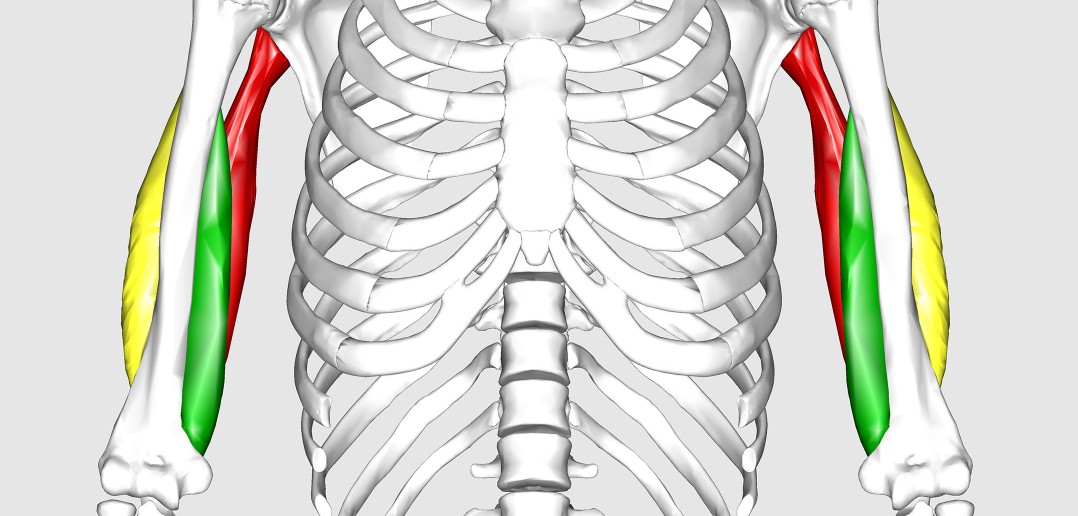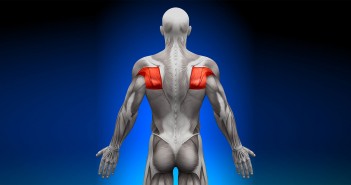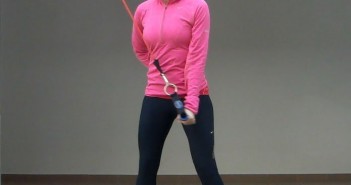The triceps brachii muscle (triceps) is the large muscle on the back of your upper arm (humorus). It is the muscle principally responsible for extension of the elbow joint (straightening of the arm).
The triceps make up approximately two thirds of the muscle mass in the arm.
Though a similarly named muscle, the triceps surae, is found on the lower leg, the triceps brachii is commonly called the triceps.
The triceps brachii muscle connects the humerus (upper arm bone) and the scapula (shoulder blade) to the ulna (longest of the forearm bones) and is the primary extensor of the elbow.
The triceps brachii has three heads (connective immovable muscle), each of different origins, joining together at the elbow. The three heads are the lateral, the medial, and the long head.
The long head of the triceps brachii muscle originates from the scapula and shoulder to insert at the elbow. It has a role in stabilizing the shoulder joint.
The medial head of the triceps brachii muscle originates from the back of the humerus.
The lateral head of the triceps brachii muscle originates from the back of the humeral shaft and inserts at the elbow.
The triceps brachii tendon is a single tendon that receives all of the triceps muscles of the back of the arm. The tendon inserts at the ulna on the olecranon process. Tapping the triceps brachii tendon creates the triceps tendon reflex.
The Role of the Triceps in the Golf Swing
As your lower body begins the downswing, your arms and wrists must maintain their angles to increase potential power, they lag behind your torso.
Creating this lag is only beneficial if you can release it efficiently, ultimately transforming it into club head speed through impact. To do this, these angles must be released in a precisely timed sequence to transfer the energy from your torso, through your arms, and then to the golf club.
As you approach impact, your triceps extend (straighten) your right arm, transferring the energy from your torso through to your arms, amplifying that energy in the process, to the golf club.
Stronger triceps will enable you to create more lag and transfer the energy more efficiently, therefore generating more power in your swing in the form of club head speed through impact.
Most shots in golf do not require immense amounts of upper body strength and power, but some of your tee shots will, inevitably, end up in the deep rough. Power in your upper body, including your triceps, will give you many more options from heavy rough, enabling you to get back on the fairway much more easily, and giving you more opportunities to go for the green from a terrible lie.
If you have any questions or comments about this or other articles on Golf Loopy, please send us an email.
You May Also Like…
Overview of a Great Golf Swing, which summarises the correct movements in a great golf swing.
An overview of the golf swing kinematic sequence, including a detailed analysis of the Downswing phase in Golf Swing Sequence and Timing.
Golf Swing Sequence and Timing – Common Faults, which gives a comparison of the kinematic sequence for typical amateurs and Tour Pros, showing the common flaws that may plague your own golf swing.
Golf Lag and the Compound Pendulum, which describes how you can use physics to generate more speed, accuracy and consistency in your golf swing, with less effort and less strain on your body.
The Role of the Right Arm in the Golf Downswing, which describes how the right arm transfers energy to the golf club in the downswing.
Golf Anatomy and Kinesiology, a collection of articles describing the roles of the muscles involved in the golf swing.
Kinetic Chain, which describes how the different parts of your body act to transfer energy from the ground to the golf ball.
The Role of the Deltoids in the Golf Swing.




